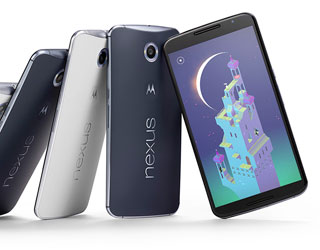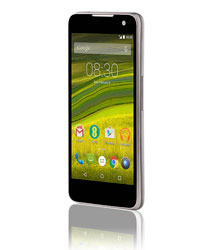
This month we have an update on the Nexus 6 from Google which are trialling some very exciting projects in the US at the moment and we also take a look at the EE Harrier. EE is taking advantage of their 4G network with this budget low end phone. See how they both got on below.
Google Nexus6 - Update
When I reviewed this phone last year it was the first device to run OS Android 5.0 Lollipop. Now it is first again with the 5.1 updated version. The six inch display feels almost too big when switching between more regular sized phone but if you are into the ‘bigger the better’ revolution then this will be right up your street. With the latest Snapdragon processor and 3Gb of RAM the device performs exceptionally well. In terms of raw power and specs this beast has the edge over the iPhone 6, at least on paper anyhow.
 Typing/ texting on the Nexus 6 is a two handed job, there is literally no way of getting around that. The only saving grace is that Android probably has the best keyboards in the business so you will be faster, and more accurate hopefully, than the one handed bandits out there.
Typing/ texting on the Nexus 6 is a two handed job, there is literally no way of getting around that. The only saving grace is that Android probably has the best keyboards in the business so you will be faster, and more accurate hopefully, than the one handed bandits out there.
The phones start at £499 for the 32Gb model, there is also a 64Gb option, which is a little more expensive than previous versions, still if you are used to buying Apple products your wallet will breathe a sigh of relief.
Design wise this is by far the best looking Nexus but more than that Motorola has gone beyond that by making the back a plastic that sits in the hand nicely, it also means you don’t need to wear a baseball mitt just to hold it.
This is truly a great phone but more than that it represents the next phase of Googles’ intentions in the mobile market. In the US the tech giant is experimenting with Project Fi cellular network. The project bounces signals of carriers T-Mobile and Sprint with far cheaper data plans for users. This project is expected to shake up the overpriced service of the traditional US carriers and if successful we could see something similar in the UK. One of the major advantages of Google operating at carrier level would be Android updates would be a complete doddle!
EE Harrier Mini
Building on the EE Kestrel the Harrier had some big shoes to fill. As the network was first into the 4G market and reports widely indicate that its network is currently ‘the best’ a cheap 4G phone could be a stroke of genius by EE. Coming in at £99 I was sceptical that the hardware would be up to much.

The display is a big step up from the Kestrel and boasts a 4.7 inch 1,280 x 720 resolution screen. It’s not quite full HD like the Harrier’s bigger brother but it is more than sufficient for the size of the screen. Design wise the handset is compact and simple, no frills but built well.
As mentioned the big selling point is 4G which is becoming more common in the low end devices but EE has a trick up its sleeve. The network introduced WiFi calling earlier this year as a way to boost its coverage in the UK, I haven’t had the pleasure of using the service yet but I hear it is swaying peoples buying decisions.
On the performance I wasn’t impressed at all. There were lagging issue when switching between apps and if I was doing things at speed then the poor phone couldn’t seem to cope. Let’s be honest for £99 pounds it’s hard to grumble too much!
EE has produced a pretty decent budget handset here which covers all the basics a business user would want. However, if they are hoping to conduct their personal business with a host of processor heavy apps then I would recommend looking elsewhere... you will frustrate yourself so much by having to wait for the phone to catch up.
